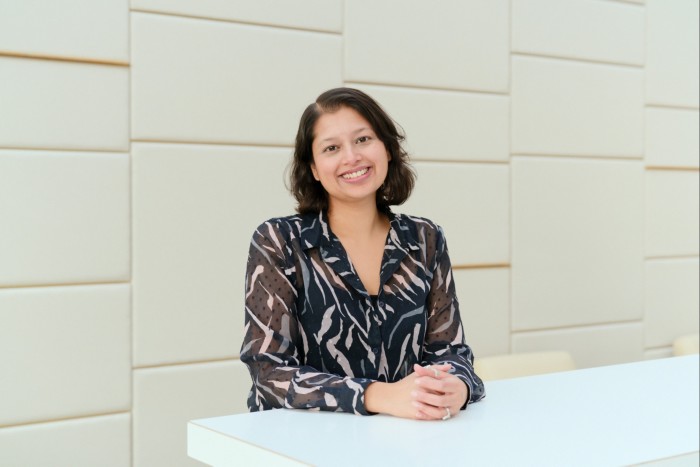UK media has diversity sights fixed on 50:50 objective

Roula Khalaf, Editor of the FT, selects her favourite stories in this weekly newsletter.
Two decades ago, as a national newspaper junior reporter, I interviewed a family who agreed to have their picture taken for the article. The father of the family was black and, when the newsdesk realised it, I was directed to find an alternative family.
That is almost unimaginable in today’s more culturally aware newsroom. Research from the National Council for the Training of Journalists shows an increase in ethnic minority journalists from 6 per cent in 2008 to 13 per cent by 2021. But embracing diversity remains a challenge.
Marcus Ryder, external consultancies head at the Sir Lenny Henry Centre for Media Diversity, notes changes in the media landscape. In the 1980s and ’90s, just four television channels existed, creating a “very strong oligopsony” — a market dominated by a few buyers. The small number of programmes bought, he adds, “did not help black people”.
Today’s hundreds of streaming and social media platforms increase opportunities to win commissions. Regulator Ofcom says public sector broadcasters’ spending on first-run UK-originated content rose 25.9 per cent last year to £2.6bn. “But, in terms of who has got the big budgets, realistically, you still have very few purchasers,” Ryder notes.
Miranda Wayland, Amazon Studios and Prime Video’s Europe diversity head, says the emergence of streaming services means more opportunity “for diverse storytellers” and “historically excluded groups represented onscreen”.
But more off-screen talent from under-represented areas of society is needed if audiences are to be “authentically reflected in our content”. For example, data from the Creative Diversity Network, show the proportion of disabled people in senior off-screen broadcast roles fell from 6.6 to 4.5 per cent in the past five years — yet disabled people comprise 18 per cent of the UK population.
However, quantity alone will not secure diversity of voice as audiences quickly spot a lack of authenticity. “We’re seeing more representation,” says Yasmin Asare-Anderson, media development director at market researchers Ipsos. The question is — Does that feel “accurate and truly representative”? Ipsos has examined how content creators can portray people and communities to avoid unconscious stereotyping but, says Asare-Anderson: “We’re not seeing the depth that we should be.”
Media organisations are turning to data as a means of understanding whether their content represents their audiences. In 2017, the BBC set up 50:50 The Equality Project, where staff keep count of who appears in editorial content.
Lara Joannides, creative diversity lead for 50:50 and BBC News, says this has helped spotlight diversity and representation. The proportion of editorial teams with at least 50 per cent women’s representation in their output rose to 61 per cent this year, against 35 per cent when monitoring began. Gratifying in itself, this has business benefits; 68 per cent of women aged 16 to 34 say they consume more BBC content because of this greater female representation.
More stories from this report
Jessica Schibli, BBC diversity and inclusion head for children’s and education output, says data analysis aids commissioning of programmes such as Something Special, which is geared towards children with delayed learning and communication skills. “We need diversity and lived experience off screen to stay relevant to our audience,” she adds. This requires diverse talent in such key roles as writers, directors and producers.
About 150 bodies, the Financial Times included, around the world have adopted the 50:50 model. The “approach to diversity is maturing”, says Vikki Cook, Ofcom diversity head for UK broadcasting; “it’s about equity and inclusion as much as diversity.”
For the uninitiated, diversity is what makes us different, equity is about providing fairness of opportunity, and inclusion is where we feel accepted without having to conform. We all have unique traits and shouldn’t need to hide them.
Today’s data collection methods are being refined to go beyond numbers alone. Having more women, for example, on staff doesn’t necessarily mean they’ll want to stay. You have to look at the quality of content that they’re working with, maternity provision, mentoring for under represented groups, and so on.
And Yasir Khan, chief editor at news service the Thomson Reuters Foundation, says “these efforts can still feel like charity”.
Still, the industry has come some way since I was a junior reporter. It is developing the tools and the will to ensure diversity is not just a “nice to have” . . . but becomes ingrained as a “must-have”.
Nina Goswami was the BBC’s first creative diversity lead and until recently head of its 50:50 The Equality Project. She is head of inclusion for the UK at global law firm Clifford Chance
Comments